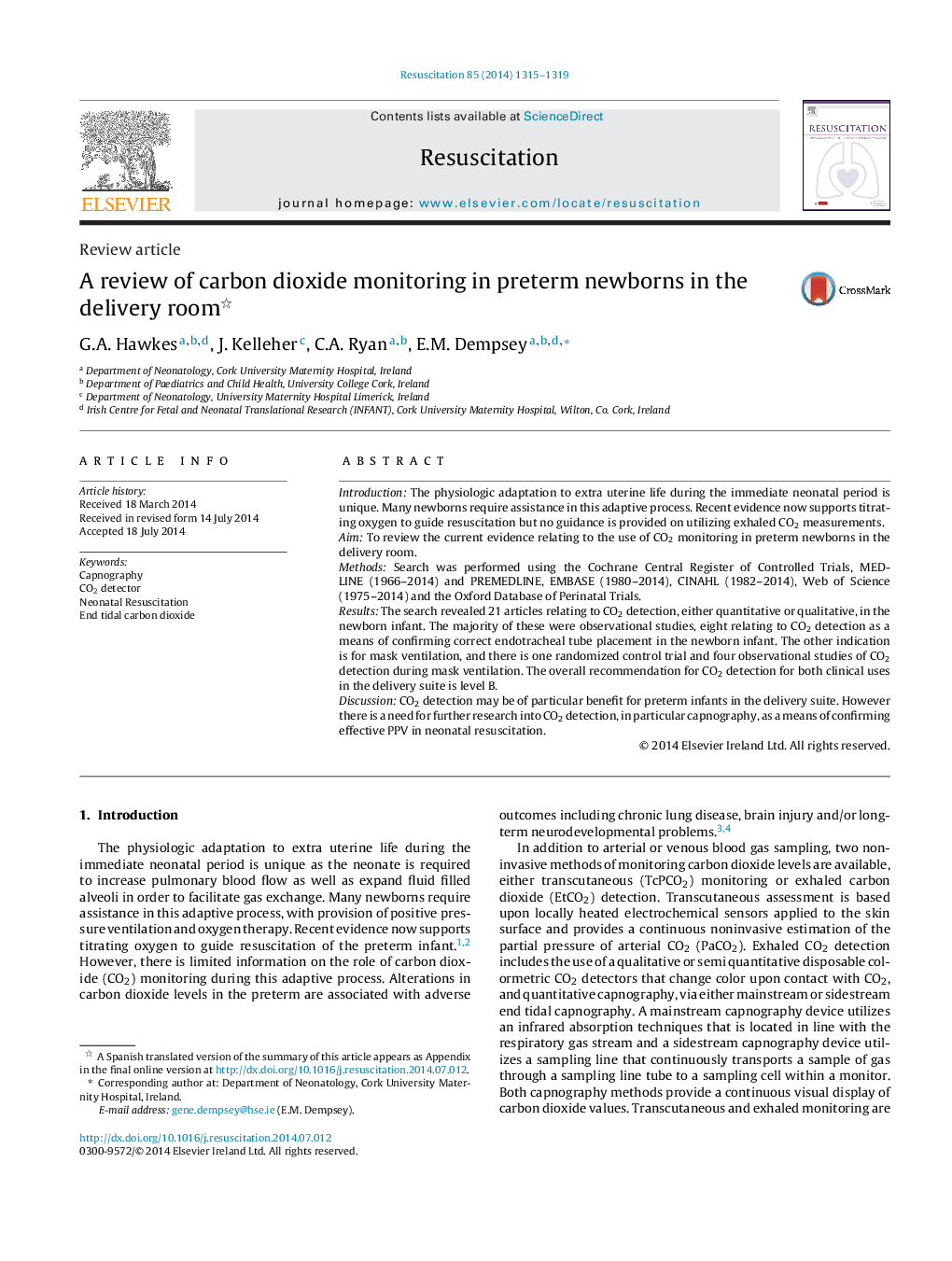| Article ID | Journal | Published Year | Pages | File Type |
|---|---|---|---|---|
| 5998338 | Resuscitation | 2014 | 5 Pages |
IntroductionThe physiologic adaptation to extra uterine life during the immediate neonatal period is unique. Many newborns require assistance in this adaptive process. Recent evidence now supports titrating oxygen to guide resuscitation but no guidance is provided on utilizing exhaled CO2 measurements.AimTo review the current evidence relating to the use of CO2 monitoring in preterm newborns in the delivery room.MethodsSearch was performed using the Cochrane Central Register of Controlled Trials, MEDLINE (1966-2014) and PREMEDLINE, EMBASE (1980-2014), CINAHL (1982-2014), Web of Science (1975-2014) and the Oxford Database of Perinatal Trials.ResultsThe search revealed 21 articles relating to CO2 detection, either quantitative or qualitative, in the newborn infant. The majority of these were observational studies, eight relating to CO2 detection as a means of confirming correct endotracheal tube placement in the newborn infant. The other indication is for mask ventilation, and there is one randomized control trial and four observational studies of CO2 detection during mask ventilation. The overall recommendation for CO2 detection for both clinical uses in the delivery suite is level B.DiscussionCO2 detection may be of particular benefit for preterm infants in the delivery suite. However there is a need for further research into CO2 detection, in particular capnography, as a means of confirming effective PPV in neonatal resuscitation.
